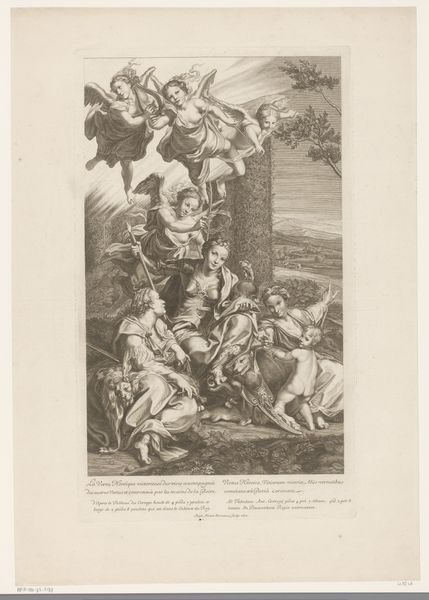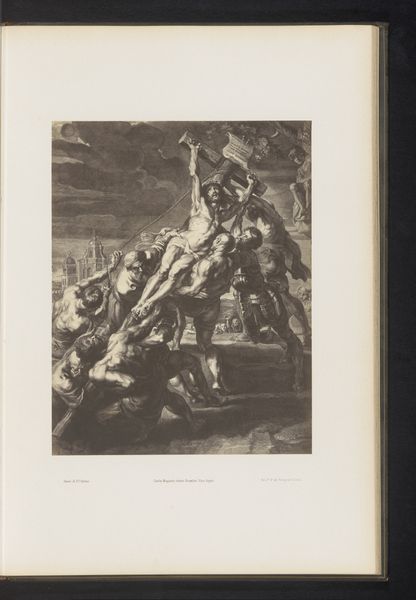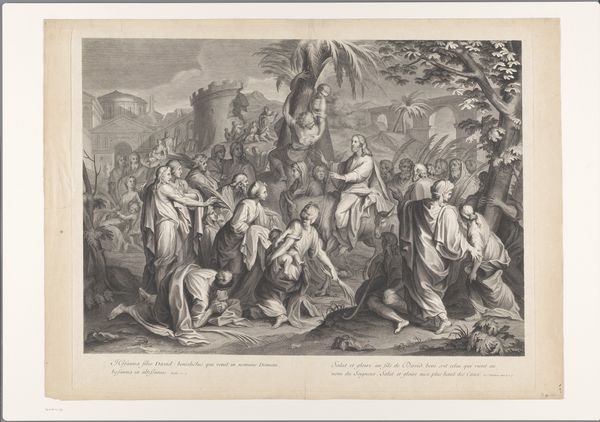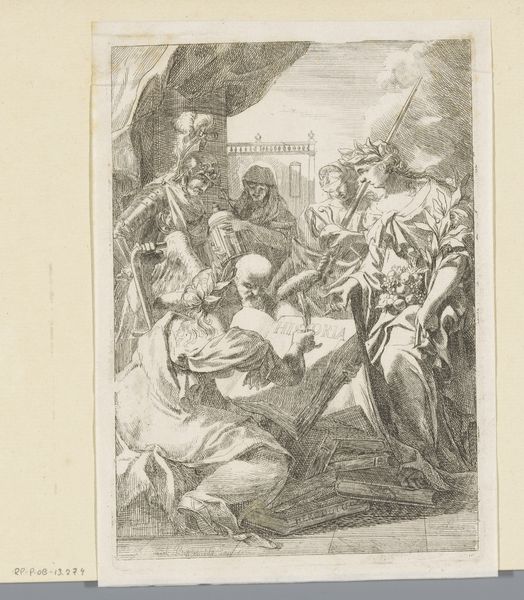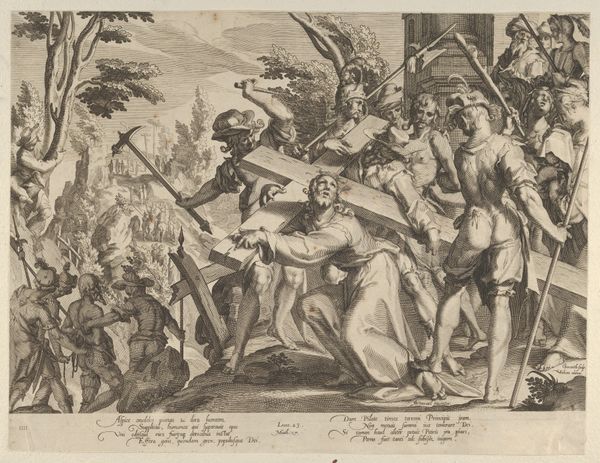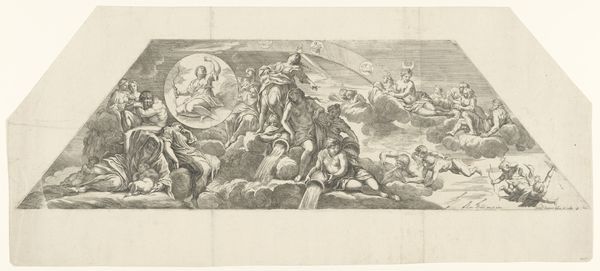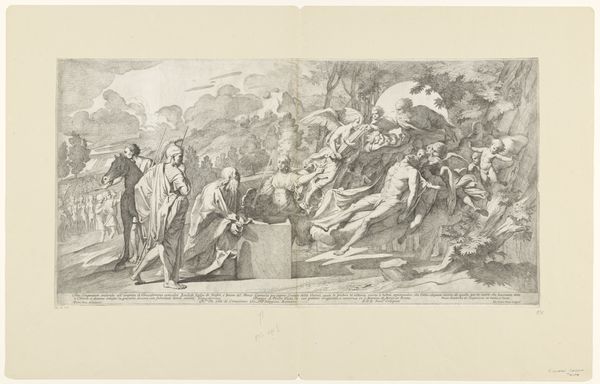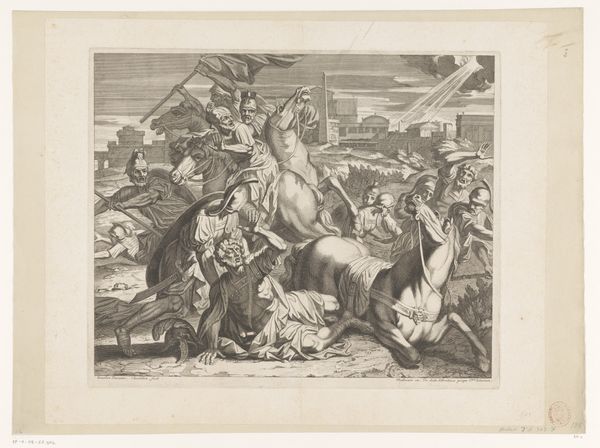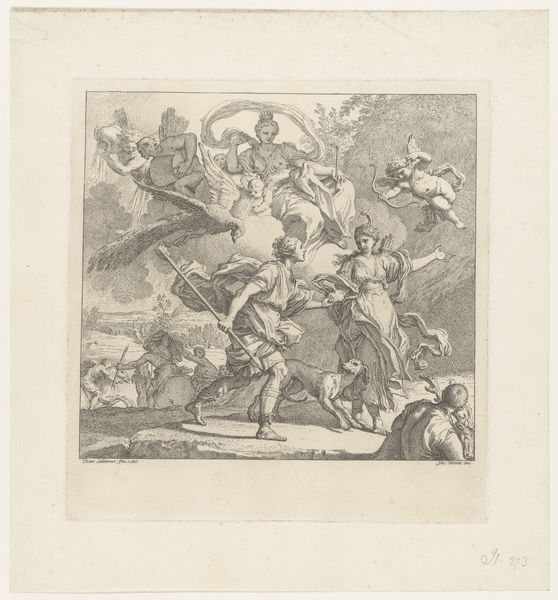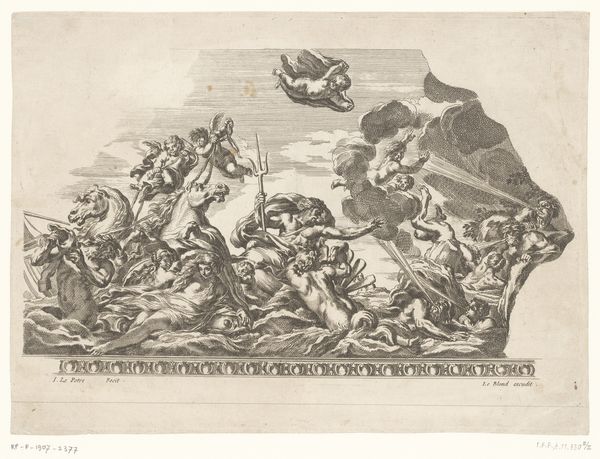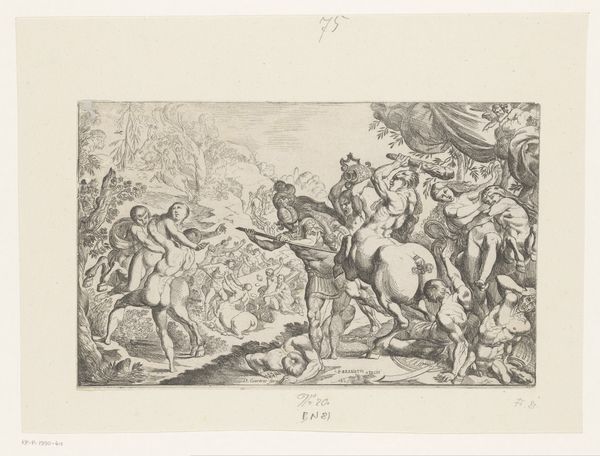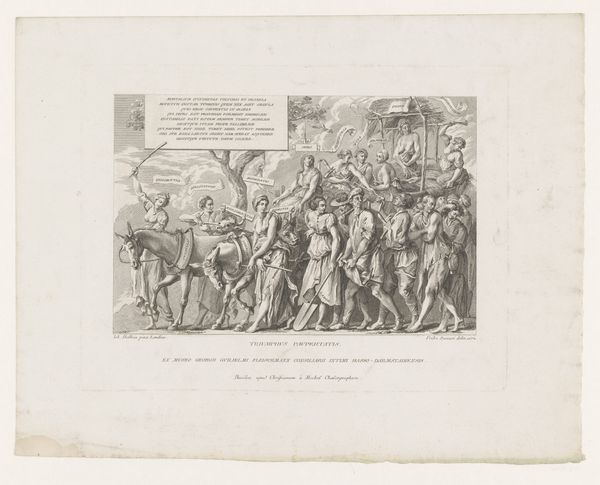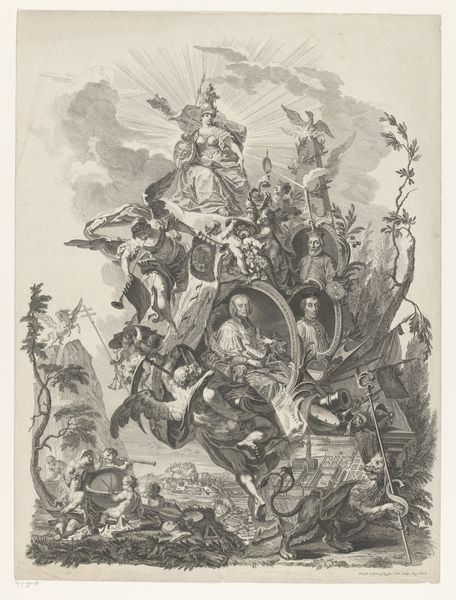
drawing, ink, pencil, engraving
#
drawing
#
baroque
#
charcoal drawing
#
ink
#
pencil drawing
#
pencil
#
history-painting
#
engraving
Copyright: Rijks Museum: Open Domain
Editor: This is “Battle between Alexander and Porus” by Bernard Picart, created around 1717. It’s a detailed engraving. It looks incredibly chaotic! So much is happening on the page... where do I even start looking? What compositional elements stand out to you? Curator: The work indeed presents a dynamic interplay of forms. The composition hinges on the contrast between the detailed foreground figures and the more ambiguously rendered background. Consider how the lines, rendered through engraving, articulate the musculature of the figures and the textures of the horses. The artist segments the picture in 3 acts, what impression do you have regarding these separations? Editor: They feel separate, even though they are supposed to be one and the same. Almost like a comic strip. I suppose there's also a hierarchy. The figures in the front panels are clear, even melodramatic, but those in the background fade to suggestions. I guess this gives it depth? Curator: Precisely. Depth, both spatial and perhaps thematic. Observe how Picart employs hatching and cross-hatching to modulate light and shadow, thereby creating volume and suggesting movement. How do these graphic strategies inform your reading of the represented event? Do you think that this engraving gives more attention to aesthetic qualities over historical record? Editor: The drama comes alive! It's stylized in a way that removes it from harsh reality, like an action painting. There’s more attention to communicating the event's magnitude over actual reality. This makes me want to know what was going through the artist's mind and what their intentions were! Curator: Indeed, analyzing the stylistic elements brings us closer to understanding not only the subject matter, but also the aesthetic considerations that guided Picart’s hand. This provides an interesting space between observation and subjective engagement. Editor: Definitely food for thought. Looking beyond the figures to appreciate the lines, the composition and techniques opens it up for more nuanced interpretations. Thanks for helping me seeing this from a structural perspective!
Comments
No comments
Be the first to comment and join the conversation on the ultimate creative platform.
